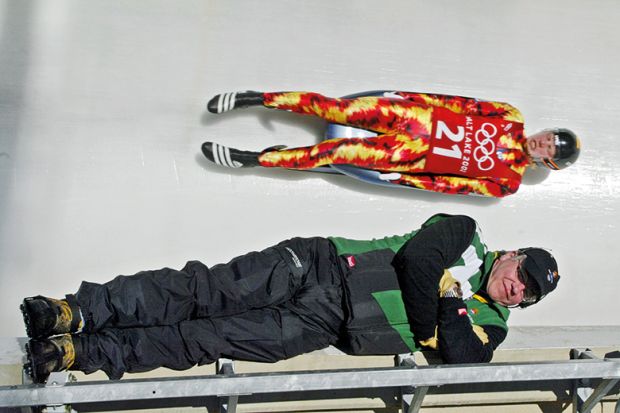Undergraduates watching yet another video lecture may often be tempted to hit the fast-forward button. And this may be no bad thing, with a study finding that students who watch recorded teaching at double speed suffer no significant impairment to their learning.
Researchers at the University of California, Los Angeles found undergraduates’ comprehension of a short video lecture only began to be significantly impeded once it was played at two-and-a-half times the normal speed.
Prior work has shown that speech comprehension begins to decline at about 275 words a minute but the study involving 231 undergraduates at UCLA found they were able to absorb the contents of an audiovisual presentation at double speed (332 words a minute) almost as well as those shown it at normal speed. Similarly, there was only a small fall-off in comprehension for students who viewed talks at one-and-a-half times normal speed (234 words a minute).
The investigation – which tested participants immediately after they had watched two video lectures and then one week later – was prompted by discussions with students who admitted they mostly watched online lectures at faster speeds, explained lead author Dillon Murphy, a doctoral candidate in cognitive psychology at UCLA.
“Most students are consuming their educational material quite differently from when lectures were held live and in person,” he told Times Higher Education.
According to Mr Murphy’s paper, published in Applied Cognitive Psychology, learning only began to decline once lectures were played at more than 400 words a minute – suggesting that accompanying visual materials allow students to process speech more easily.
A follow-up question found that 85 per cent of students usually watched lectures at faster speeds – with 60 per cent watching at one-and-a-half speed and 23 per cent at double speed. Roughly half of participants believed one-and-a-half speed was the optimal speed to watch lectures, just ahead of the 42 per cent who felt normal speech was best.
The study also conducted an experiment that found that students who watched a video lecture at double-speed twice a week – once immediately before a test – did better than those who watched the same lecture only once.
Despite the results, Mr Murphy said it was too early to advocate double-speed viewing as an effective learning strategy, pointing out that their data might not be replicated in other contexts, with the “complexity or difficulty of the topic, audiovisual overlap [of the presentation], the age of the learner, and the ability to understand an instructors’ speech” all likely to vary significantly between subjects and universities.
“We were careful not to recommend this strategy to students if their goal is simply to save time,” explained Mr Murphy. Instead, they should benefit if they use any time saved by “spending the time saved on additional study activities such as reviewing flashcards, taking practice tests, or perhaps watching the videos again shortly before an exam”.
POSTSCRIPT:
Print headline: Speedy viewing causes ‘no harm’
Register to continue
Why register?
- Registration is free and only takes a moment
- Once registered, you can read 3 articles a month
- Sign up for our newsletter
Subscribe
Or subscribe for unlimited access to:
- Unlimited access to news, views, insights & reviews
- Digital editions
- Digital access to THE’s university and college rankings analysis
Already registered or a current subscriber? Login








